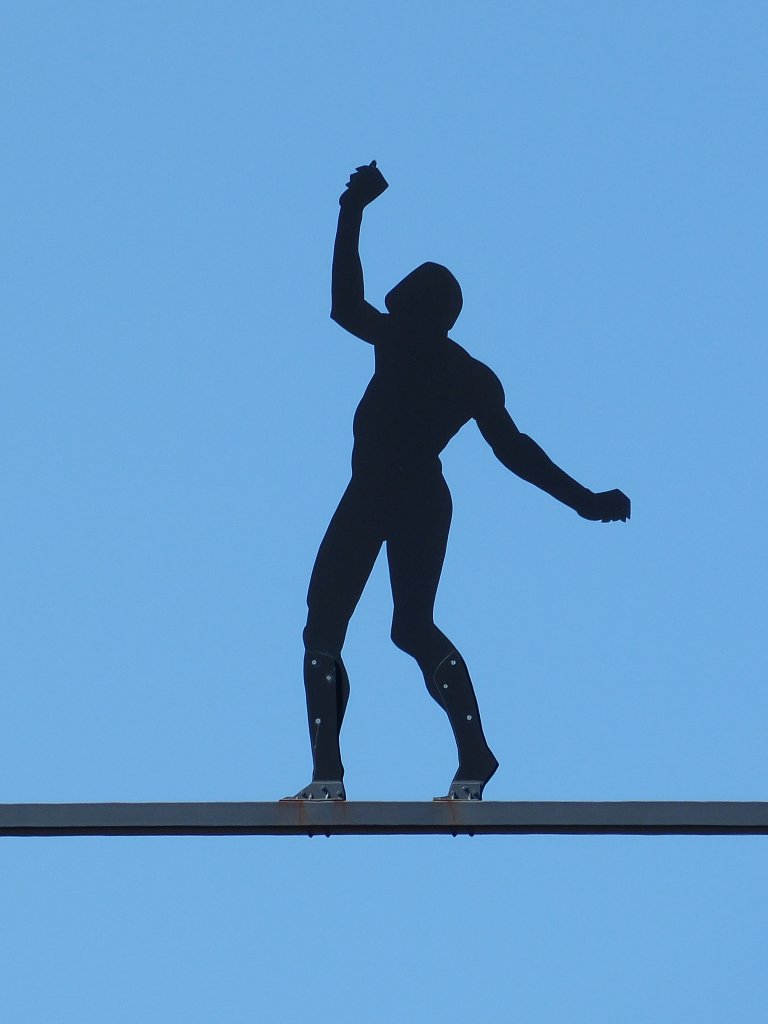Striking the Right Balance
Striking the Right Balance
Michael Vekasi, AuD, R.Aud, Aud(C), FAAA and Erica Zaia are coordinating the “Striking the Right Balance,” column which will cover the latest information on “all things vestibular.”
In this edition of "Striking the Right Balance," Lisa Koch, AuD, an adjunct associate professor with the AT Still University Arizona School of Health Sciences and operator of an audiology private practice in Southern Ohio for 20 years in vestibular testing and vestibular rehabilitation discusses what she feels is the general scope of practice audiologists should consider when including vestibular rehabilitation in their practice.
If you are a health care professional and would like to be more involved in all things vestibular, please sign-up for the Vestibular Special Interest Group. Sign-up by emailing CAAvestibular@gmail.com to let us know you want to be included. Also, check out our Facebook page for a free list of online vestibular resources at the CAA National Vestibular Special Interest Group page.
According to the American Physical Therapy Association, there is a preponderance of benefit over harm when clinicians perform vestibular rehabilitation services to persons with functional limitations related to their vestibular deficit. In addition, vestibular rehabilitation has been shown to improve treatment outcomes regardless of the time from onset of the vestibular deficit. Patients experience decreased quality of life when vestibular rehabilitation is initiated later compared to as soon as possible.
Balance assessment and rehabilitation is within the scope of practice of the audiologists in the U.S. “audiologists provide comprehensive diagnostic and rehabilitative services for all areas of auditory, vestibular and related disorders.” The American Academy of Audiology (AAA) Scope of Practice states audiologists are “uniquely qualified to provide a comprehensive array of professional services related to the assessment and habilitation/rehabilitation of persons with auditory and vestibular impairments.”

The audiologist that sees balance disordered patients must keep current their pool of knowledge relevant to balance assessment and treatment. Appropriate academic and clinical background to perform vestibular assessment and rehabilitation must be accompanied by obtaining post-graduate continuing education.

Audiologists are also involved in the rehabilitation of persons with vestibular disorders. They participate as members of vestibular rehabilitation teams to recommend and carry out goals of vestibular rehabilitation therapy including, for example, habituation exercises, balance retraining exercises, and general conditioning exercises.
A professional preparing to offer vestibular rehabilitation services to their patients must be prepared in specific areas of knowledge and skills. In this article an overview of the breadth of knowledge and skills necessary for the assessment and management of patients with balance disorders.
There are also specific areas of knowledge and skills that a professional offering vestibular rehabilitation services must be have for the management of the patient with balance disorders including:
- Knowledge about the theory, rationale, and various procedures necessary to distinguish between the presence of posterior, anterior and horizontal canal benign paroxysmal positional vertigo (BPPV) as well as the difference between canalithiasis and cupulolithiasis forms of BPPV.
- The ability to administer a canalith repositioning procedure on patients with posterior, anterior or horizontal canal BPPV.
- Knowledge necessary to distinguish between the need for adaptation and/or habituation exercises while designing a vestibular and balance rehabilitation program.
- The ability to determine the need to refer for balance and gait assessment and the need for gait and balance exercises based on that assessment.
- Administration of outcome measures that will reflect the efficacy of the vestibular and balance rehabilitation program.
The professional offering vestibular rehabilitation services should have a thorough knowledge of the anatomy and physiology of the vestibular, visual and somatosensory systems.
In the area of assessment, the professional should have the ability to interpret the diagnostic evaluation done for patients with balance disorders.
The professional should be able to establish a baseline for outcome measures to assess the efficacy of the vestibular rehabilitation program.
The professional should have the ability to perform clinical maneuvers that provoke symptoms of BPPV including:
- Dix-Hallpike maneuver
- Semont liberators maneuver
- Side-lying test for BPPV; and
- Roll maneuver
- Brandt-Darroff exercises
They should understand the development of the diseases that affect the sensory input systems that are necessary for the maintenance of balance.
Professionals offering vestibular rehabilitation services should also be familiar with medical, surgical and dietary strategies that might be used for patients with balance disorders.
- Explain in lay terms the anatomy and physiology of the vestibular system.
- Recognize and state the clinical significance of diagnostic studies and lab data.
- Recognize and state the clinical significance of physical assessment and interview data obtained from medical records.
- Identify from the medical records the signs, symptoms and co-existing problems of the client.
- Recognize the significance of therapeutic regimes including medications, diet, and surgical procedures for the patient and for vestibular rehabilitation.
- Recognize disorders that may affect the vestibular system but are not appropriate for treatment by physical therapists.
- Perform and give rationale for appropriate evaluation procedures.
- Interpret evaluation findings appropriately.
- Formulate and give rationale for plan of care based on evaluation findings and medical records.
- Perform appropriate therapeutic procedures.
- Demonstrate appropriate post-therapy evaluation and discharge planning.
Methods used in the management of patients with balance disorders have changed. No longer is there a need for site-of-lesion test information only (ENG, VNG). By including results from the patient's history and examination, traditional vestibular test results, visual and postural control information, the clinician can quickly and effectively identify those patients that can be effectively rehabilitated. The professional should be able to complete a variety of screening techniques that can be used to assess patients with balance disorders including oculomotor examination of the eyes (ocular motion conjugate/disconjugate, vertebral artery compression screening,). Management for these patients has expanded to include the postural control component (computerized dynamic posturography [CDP], the Modified Clinical Test of Sensory Interaction on Balance [mCTSIB], Romberg test, and Fukuda Step Test) as well as the visual component (head shake test, vestibular autorotation test [VAT], head thrust test, and dynamic visual tracking).
Being equipped to adequately evaluate and rehabilitate patients with balance disorders also necessitates that you recognize those patients that are not in your scope of practice to rehabilitate. A referral relationship with a facility for additional diagnostic and rehabilitative support is necessary. For example, referral for CDP would be indicated if a patient has poor results on the mCTSIB, when the chief complaint is unsteadiness/falling, or involves a medico-legal determination.
Multi-system involvement also requires additional information provided by CDP to determine the relative contribution of each sensory system (somatosensory as well as vestibular and visual) input/deficit.
In summary, diagnosing and treating dizzy patients is more complicated than it appears. A prudent clinician will research and evaluate the opportunity before deciding to offer vestibular services. The average dizzy patient sees 4.5 physicians before getting a diagnosis, let alone proper treatment. If you specialize in dizziness and balance disorders, opportunity awaits!
Bibliography
The American Academy of Audiology. Position statement on the audiologist's role in the diagnosis & treatment of vestibular disorders. Reston, VA: Author. Available at: http://www.audiology.org/publications-resources/document-library/position-statement-audiologists-role-diagnosis-treatment
The American Speech-Language-Hearing Association. Role of audiologists in vestibular and balance rehabilitation: technical report. Rockville, MD, Author. Available at: http://www.asha.org/policy/TR1999-00045/
The American Speech-Language-Hearing Association. Role of Audiologists in Vestibular and Balance Rehabilitation: Guidelines. Rockville, MD: Author. Available at http://www.asha.org/policy/GL1999-00015/
The American Speech-Language-Hearing Association. role of audiologists in vestibular and balance rehabilitation: position statement, guidelines, and technical report. ASHA 1999;19(41)2:13–22, ISSN: 0001-2475
The Canadian Academy of Audiology. Scope of practice. Toronto: Author; 2002. Available at: https://canadianaudiology.ca/professional-resources/scope-of-practice/.
Gans R. The business side of balance. Audiology Online. Houston, TX: Author; 2002, Available at: http://www.audiologyonline.com/articles/business-side-balance-marketing-issues-1162
Hall CD, Herdman S, Whitney S, et al. 2016, Vestibular rehabilitation for peripheral vestibular hypofunction: an evidence-based clinical practice guideline from the American Physical Therapy Association Neurology Section. J Neurol Phys Ther 2016. Retrieved from http://vestibular.org/sites/default/files/Cynthia/Vestibular%20Rehab%20CPG%20JNPT%202016.pdf.
Li JC, Epley J, and Weinberg L. Cost effective management of benign paroxysmal positional vertigo using canalith repositioning. Otolaryngol Head Neck Surg 1999;122, 334–39.
Vestibular Disorders Association. Possible symptoms of vestibular disorders. Portland, OR: Author; 2010. Available at: https://vestibular.org/sites/default/files/page_files/Documents/Symptoms.pdf.

